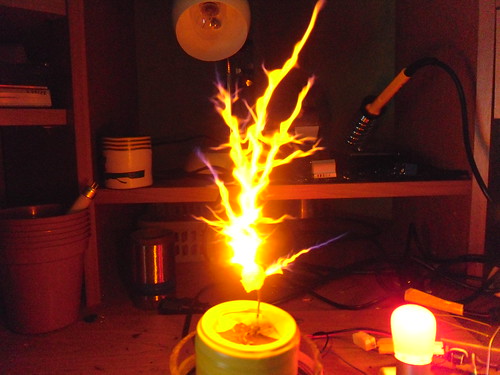- Joined
- Aug 14, 2013
- Messages
- 2,640
- Points
- 63
It worked before with the flyback and the tesla coil, why can't it work if I rewind it now?
Because there is more to a DC flyback
transformer than just coils and windings.
The secondary coil is not even just one
coil, but several coils in series with
diodes in between. Some of them even have
a film capacitor inside. And in your
earlier comment:
Before it burned out, when I powered on the flyback with the leyden jars in parallel with one flyback lead and then connect to the other, it seemed fine. It made a white blue sparking and a loud buzzing, and the closer the spark gap the higher pitch the noise was and vice versa.
Did you also catch the part in Sigurthur's
post where he said you need extra
components to run a Tesla coil from a DC
flyback? That is why your flyback burned
out. I have blown flyback transformers
before doing the exact same thing (and
other things, quite a few, actually). I
even thought no one had figured out how to
do it until a few days ago. See, I am
learning things too. When it gets really
difficult and you want to give up, that is
when you start learning things.




